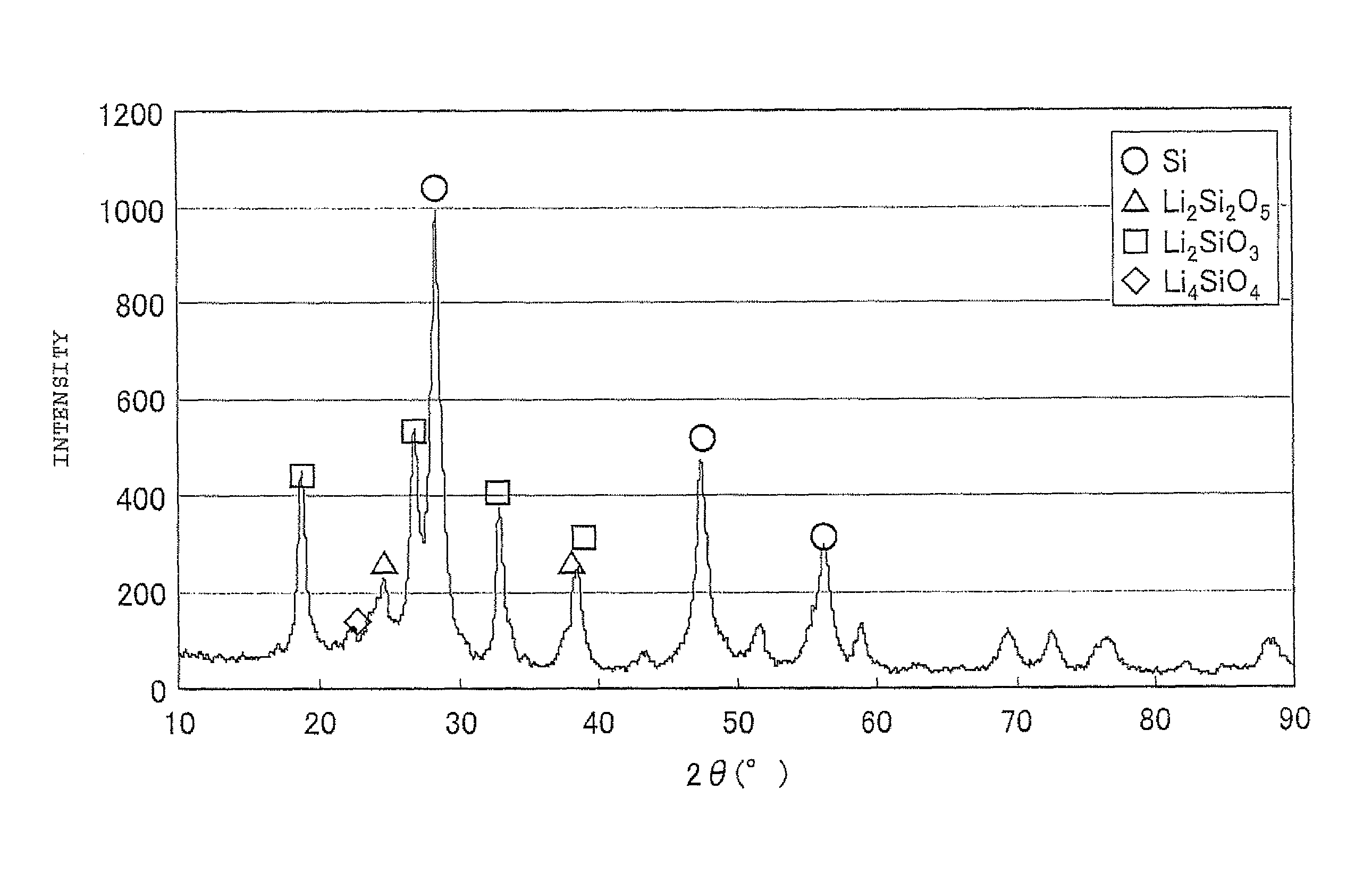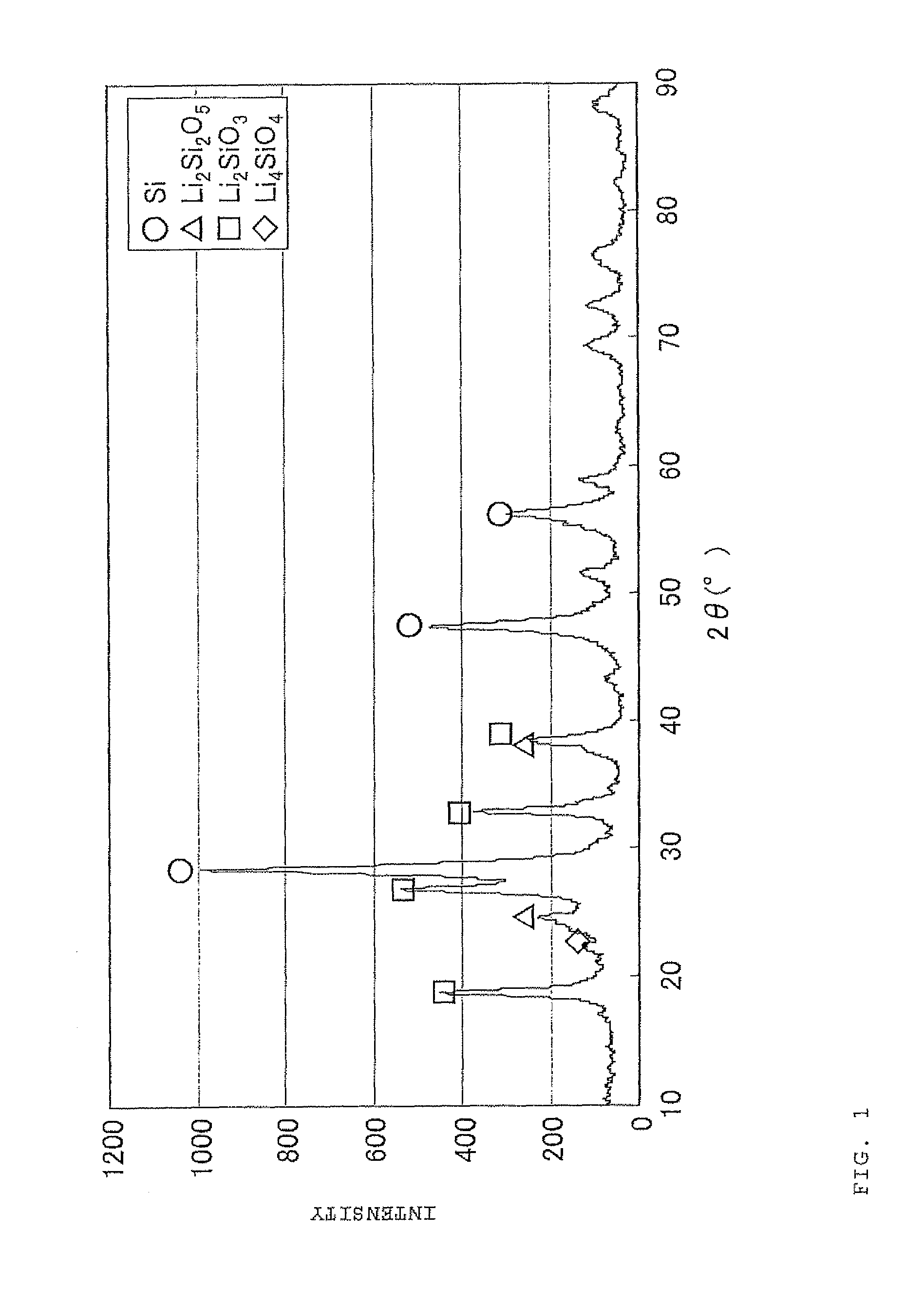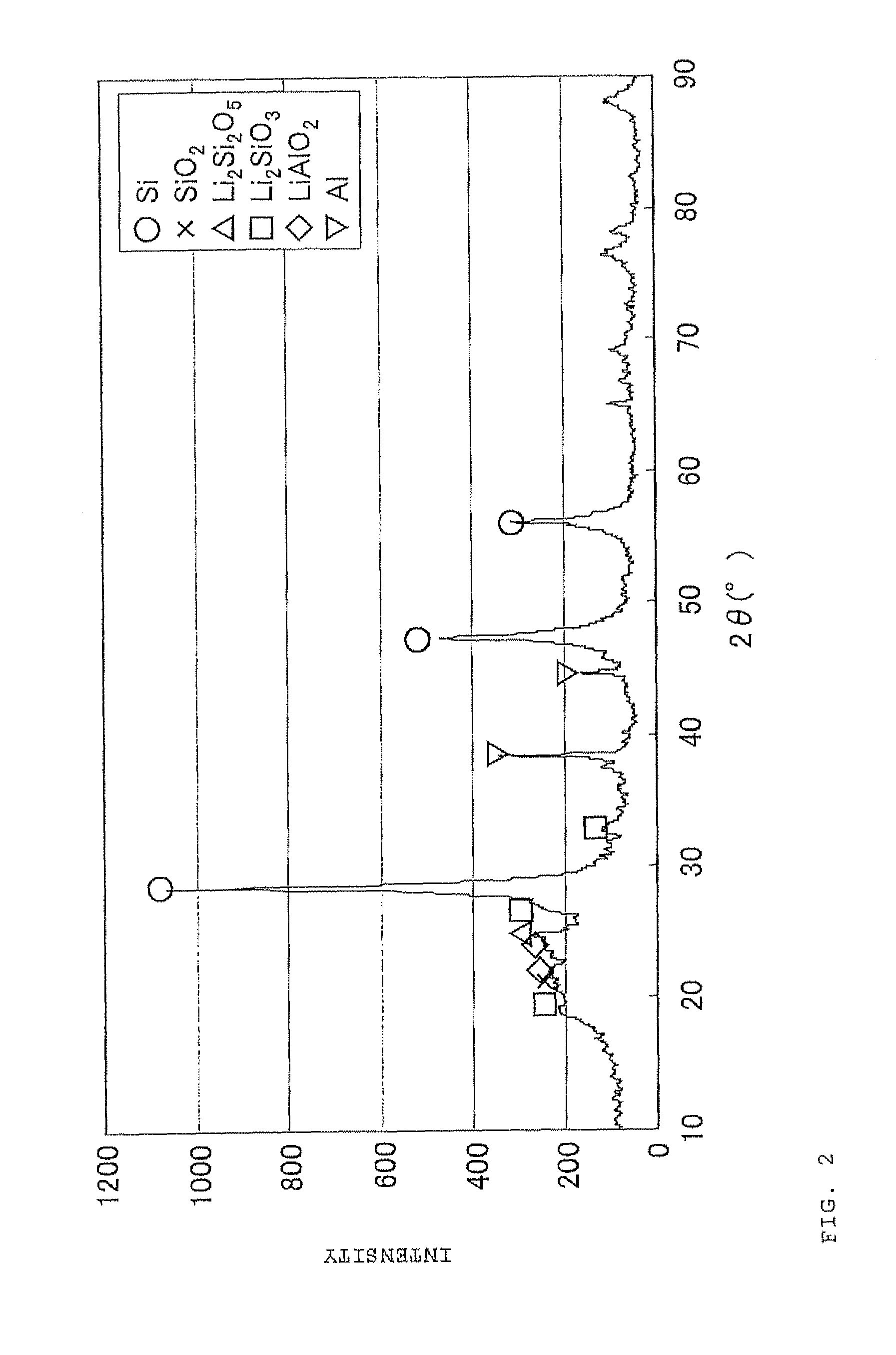Negative electrode material for secondary battery having lithium-doped silicon-silicon oxide composite
a secondary battery and negative electrode technology, which is applied in the field of negative electrode materials for secondary batteries, can solve the problems of reaction rate, insufficient practical use of the most advanced art described in patent literature 8, and inferior so as to improve the electrical conductivity and cycle durability of the negative electrode material, and improve the capacity of the secondary battery.
- Summary
- Abstract
- Description
- Claims
- Application Information
AI Technical Summary
Benefits of technology
Problems solved by technology
Method used
Image
Examples
example 1
[0132]Metallic silicon and silicon dioxide were blended at a molar ratio of 1:1, and reacted at 1400° C. under a reduced pressure of 100 Pa to generate a silicon oxide gas. The gas was cooled at 900° C. under a reduced pressure of 50 Pa to precipitate, and a product in mass form was consequently obtained. The product was pulverized with a dry-type ball mill to obtain powder having an average particle size of 5 μm.
[0133]Chemical analysis revealed that the composition of this powder was SiO0.95, the structure that silicon particles were dispersed to silicon oxide in an atomic order and / or a crystallite state was observed with a transmission electron microscope, and the powder was thus silicon-silicon oxide composite. The size of silicon crystal of this silicon-silicon oxide composite was 4 nm.
[0134]The silicon-silicon oxide composite powder was subjected to the heat CVD treatment by using a raw material of a methane gas at 1100° C. under a reduced pressure of 1000 Pa for 5 hours to co...
example 2
[0139]Except that lithium aluminum hydride was used as the lithium dopant in Example 1, the negative electrode material for a secondary battery with a non-aqueous electrolyte was manufactured in the same conditions as Example 1, and the same evaluation was carried out.
[0140]As a result, the doping amount of lithium was 2%. The structure that silicon particles were dispersed to silicon oxide in an atomic order and / or a crystallite state was observed with a transmission electron microscope.
[0141]Moreover, it was confirmed that the peaks attributable to silicon, lithium silicate, and lithium aluminate were observed when the x-ray diffraction using Cu—Kα ray, the size of silicon crystal was 10 nm, and thus the growth of the silicon crystal was suppressed. It was further confirmed that the ratio satisfied a relation of I(SiC) / I(Si)=0, and thus the generation of SiC was suppressed. The x-ray diffraction chart thereof is shown in FIG. 2.
example 3
[0142]Metallic silicon and silicon dioxide were blended at a molar ratio of 1:1, and reacted at 1400° C. under a reduced pressure of 100 Pa to generate a silicon oxide gas. The gas was blended with a silicon gas that was generated by heating metallic silicon to 2000° C. The blended gas was cooled to 900° C. under a reduced pressure of 50 Pa to precipitate, and a product in mass form was consequently obtained. The product was pulverized with a dry-type ball mill to obtain silicon-silicon oxide composite powder having an average particle size of 5 μm.
[0143]Chemical analysis revealed that the composition of this silicon-silicon oxide composite powder was SiO0.5, the structure that silicon particles were dispersed to silicon oxide in an atomic order and / or a crystallite state was observed with a transmission electron microscope, and the powder was thus silicon-silicon oxide composite. The size of silicon crystal of this silicon-silicon oxide composite was 5 nm.
[0144]The silicon-silicon ...
PUM
| Property | Measurement | Unit |
|---|---|---|
| size | aaaaa | aaaaa |
| size | aaaaa | aaaaa |
| temperature | aaaaa | aaaaa |
Abstract
Description
Claims
Application Information
 Login to View More
Login to View More - R&D
- Intellectual Property
- Life Sciences
- Materials
- Tech Scout
- Unparalleled Data Quality
- Higher Quality Content
- 60% Fewer Hallucinations
Browse by: Latest US Patents, China's latest patents, Technical Efficacy Thesaurus, Application Domain, Technology Topic, Popular Technical Reports.
© 2025 PatSnap. All rights reserved.Legal|Privacy policy|Modern Slavery Act Transparency Statement|Sitemap|About US| Contact US: help@patsnap.com



